The Witch Bottle of Greene County: A Tale of Terror, Mystery, and Enduring Legacy
The experience, known as "the crushing," marked the beginning of a tale that would weave its way through generations, leaving an indelible mark on the history and folklore of Greene County.
Good morning, Greene County!
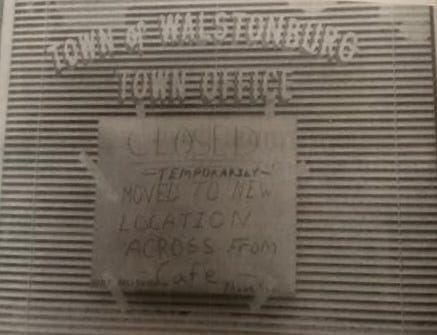
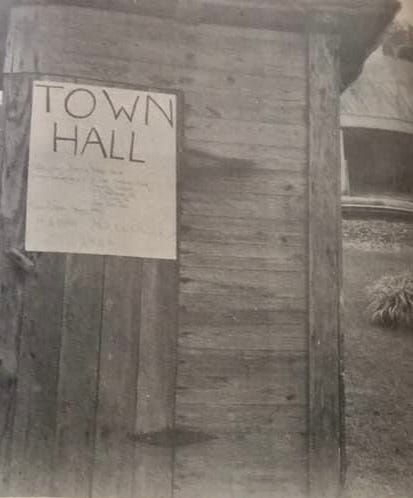
Photo Credit: The Standard Laconic - October 1984
As Halloween creeps closer, we've been collecting spooky tales from around the county – but forget about ghosts for a moment, because the greatest trick ever pulled at Halloween in our county didn't involve anything scary or supernatural.
Picture this: Halloween morning, 1984. Walstonburg residents arrived at the Town Hall to find an official-looking notice on the front door announcing that operations had "temporarily relocated across the street." No big deal, right? Wrong. These mystery pranksters had worked through the night to install their new "government facility" – a fully functional wooden outhouse, proudly stationed exactly where the sign pointed. Some say you could hear the laughter from three counties over when the first person read that sign and realized where their tax dollars had supposedly moved to.
While the masterminds behind this governmental "downsizing" have never come forward, their legendary porta-potty politics and commitment to quality pranking have earned them permanent VIP status in Greene County's hall of fame for creative mischief. Now that's what we call public works!
The Weather Forecast
The remainder of the week is expected to be a mix of sunny and cloudy days with mild temperatures. Thursday will be mostly sunny with some morning mist, while Friday will see increasing cloud cover. Saturday and Sunday will be cooler with partly cloudy skies, and there's a chance of isolated showers on Sunday.
Daily Forecast:
Thursday, October 31, 2024: Mostly sunny with morning mist, high of 82°F, low of 62°F. Expect some fog in the morning, but it should burn off by mid-morning.
Friday, November 1, 2024: Partly cloudy with a chance of showers, high of 82°F, low of 62°F. Humidity will be high, making it feel warmer than the actual temperature.
Saturday, November 2, 2024: Overcast with a chance of light rain, high of 72°F, low of 52°F. Cooler temperatures and increased wind speeds will make it feel chilly.
Sunday, November 3, 2024: Partly sunny, high of 73°F, low of 51°F. Pleasant weather with moderate humidity levels.
Sweet Memories: How Halloween Traditions Are Evolving
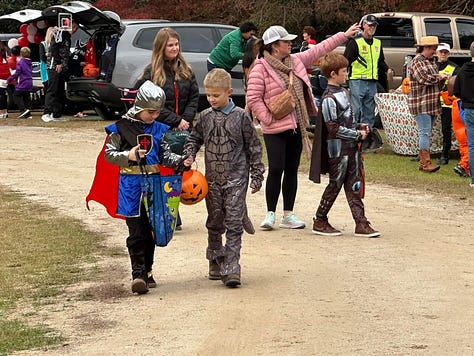
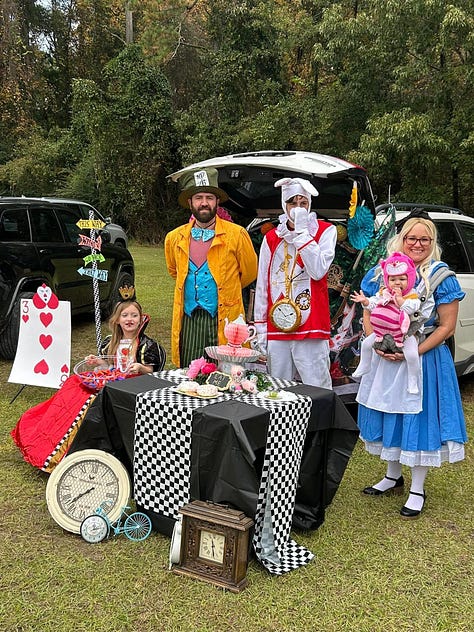
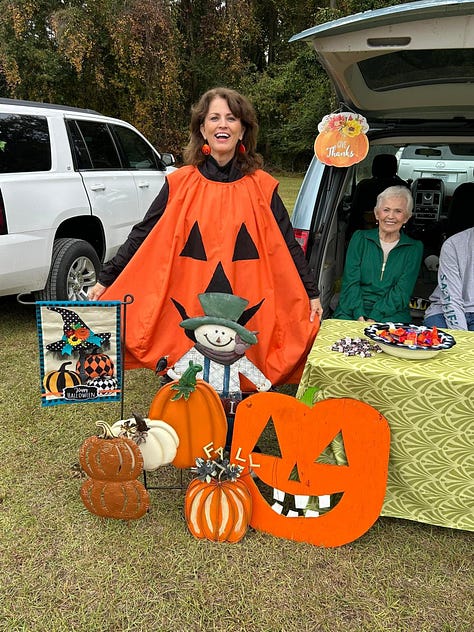
The soft glow of jack-o’-lanterns illuminates neighborhood streets as children’s laughter echoes through the crisp autumn evening. In communities across America, Halloween celebrations are undergoing a fascinating transformation. While costumed kids still trek door-to-door with plastic pumpkin buckets and pillowcases in hand, a new tradition has emerged alongside the classic Halloween experience. The time-honored ritual of trick-or-treating now shares the spotlight with community-centered “trunk-or-treat” events, creating a richer, more inclusive celebration that brings together both rural and urban families in exciting new ways. It’s the spookiest time of year, and local residents are keeping cherished Halloween traditions alive while embracing new ways to celebrate.
The Golden Age of Trick-or-Treating
“Ringing doorbells, yelling ‘Trick or treat!’ and watching homeowners delight in our creative costumes was such a fun part of the experience,” recalls Andy Johnson, who grew up in Walstonburg during the 1980s. “My friends and I would start our Halloween route on the north side of the railroad tracks, making sure to stop at the local café for homemade popcorn balls and the Town Hall where everyone knew they’d get something special.”
The strategic planning of Halloween routes was an art form in itself. “We’d hit all the houses on one side of the tracks first, then make our way across to the other side,” Andy remembers. “The railroad tracks kind of split our town in half, and crossing them was like entering a whole new territory of treats. There was this one house on the south side that always decorated their whole yard like a graveyard and gave out those variety packs with all the good stuff - Twix, Milky Way, and 3 Musketeers.”
The excitement of Halloween candy discussions would start weeks before the big night. Kids huddled around school lunch tables, sharing tips about which houses had the best treats the year before. The day after Halloween was always filled with candy trading and comparing hauls, with some kids proudly displaying their full-size candy bars like trophies.
The Birth of Trunk-or-Treating
As communities grew and changed through the 1990s and early 2000s, Halloween traditions began to evolve. Trunk-or-treating emerged in the late 1990s as communities looked for new ways to celebrate Halloween together. The idea was simple but revolutionary: instead of children walking house to house, families would gather in a central location, decorate their trunks, and distribute candy in a festival-like atmosphere.
“We attended our first trunk-or-treat in Snow Hill a few years ago,” says Carol Rodriguez, a long-time resident. “It started small, just some of us decorating our cars in the parking lot in front of the Greene Street Diner. Word spread quickly, and the following year, they had families driving in from all over the county. Unfortunately, the Diner closed, and the event is now hosted by the town’s police department. It’s grown much larger since its early days and is now held in the recreation complex parking lot.”
The concept quickly caught on, especially in rural areas. “Living five miles out of town on a gravel road meant we rarely got trick-or-treaters,” explains Sarah Williams, who has decorated her car trunk for the past six years. “Trunk-or-treat lets us be part of the Halloween fun. Now we get to see all the kids in their costumes and be part of the celebration.”
How Trunk-or-Treating Transformed Halloween
What started as a simple alternative has grown into an elaborate celebration. Modern trunk-or-treat events feature themed decorations that rival any haunted house. Families share ideas and tips for creating everything from spooky forest scenes to underwater adventures.
“Decorating our trunk is like creating a mini Halloween world,” says Mike Rodriguez, whose family participates in several local events. “We’ve seen everything from pirate ships to space stations. One family even created a whole dinosaur dig site complete with fossil cookies and chocolate ‘dirt.’ The kids love seeing what’s new each year.”
The events have evolved beyond just candy distribution. “Now we have carnival games, a costume parade, and even friendly competition for best-decorated trunk,” explains a local pastor. “It’s become a real fall festival. Last year we counted over forty decorated vehicles and hundreds of excited kids.”
Today’s Young Trick-or-Treaters
Eight-year-old Jake Rogers represents the new generation of Halloween enthusiasts. Adjusting his pirate eye patch, he explains, “I love going to both. It’s like getting two Halloweens!”
Ten-year-old Sarah Wilkins adds, “Trunk-or-treat is really fun because you can see all your friends at once. Plus, some people make their cars super spooky! Last year, someone made their trunk look like a dragon’s mouth, and you had to reach inside to get the candy!”
Finding Room for Both Traditions
Not everyone has completely abandoned traditional trick-or-treating. Twelve-year-old Tom Erikson still enjoys the classic approach: “Going house to house is really fun. You get to see all the decorated yards and porches. My favorite house has a whole graveyard with fog machines!”
The beauty of modern Halloween lies in embracing both old and new traditions. Many families participate in trunk-or-treat events on the weekends leading up to Halloween, then enjoy traditional neighborhood trick-or-treating on October 31st.
The Future of Halloween
“Trunk-or-treating hasn’t replaced traditional trick-or-treating – it’s added to it,” observes James Martinez, a local parent. “The weekend events build excitement for Halloween night. Plus, it gives families who live out in the country and on the roads less traveled a chance to participate in the Halloween experience.”
The events have strengthened community bonds. Farmers, town residents, and rural families all come together, sharing treats and admiring costumes. The trunk-or-treat events often feel like old-fashioned harvest festivals, with hay bales for seating and the sounds of children’s laughter mixing with autumn breezes.
Whether children collect their candy from porches or car trunks, the spirit of Halloween remains unchanged. The next generation will create their own Halloween memories to treasure, blending the best of both worlds in their own special way.
A Legacy of Faith: Liberty Baptist Celebrates 64 Years
Generations of faithful gathered for Liberty Baptist Church’s 64th homecoming celebration. The familiar face of Mike Ellis stood at the doors, extending warm greetings to each arrival—from lifelong members to returning friends who had traveled miles to be present for this special day.
Inside the sanctuary, a mesmerizing display of photographs spanning six decades captured the attention of the gathering congregation. The images, projected on a large screen, sparked a cascade of memories and exclamations as returning members recognized familiar faces frozen in time. The photographs revealed the physical transformation of Liberty Baptist through the decades—from its humble beginnings to the major renovation that reoriented the sanctuary in the early 1990s, and the addition of the welcoming fellowship hall in 2014.
Gene Myatt, one of the founding pillars who helped establish the church in 1960, sat surrounded by family, his presence a living testament to the enduring faith that has anchored Liberty Baptist through decades of change. Earlier in the service, he had joked, “We’ve got great people—we’ve got two bad ones,” drawing warm laughter from the congregation.
The service began with the rich, harmonious voices of the Voices of Faith Quartet filling the renovated sanctuary. Their second song, “Just As I Am,” brought back precious memories for many in attendance—the familiar strains seeming to bridge past and present, connecting the congregation’s heritage to its hope-filled future.
Pastor Rusty Conyers rose to deliver a powerful message from Ecclesiastes 3. “To everything, there is a season,” he began, “and a time to every purpose under the heaven.” He spoke of the various seasons—times to be born and to die, to plant and to harvest, to break down and to build up, to mourn and to dance.
“Think about the seasons this church has witnessed,” he continued. “When I got here at the 50-year mark, the church was going through a lot. Church life is up and down, right? But in my 14 years here, I’ve seen God’s faithfulness through every season.”
Drawing from Proverbs 29:18, Pastor Conyers emphasized, “Where there is no vision, the people perish. But God has given this church vision for 64 years, and He’s not done yet.” He shared how the recent renovations symbolized the church’s commitment to future ministry while honoring its past. “These walls have been renewed, but the foundation remains the same—Jesus Christ, the chief cornerstone.”
The pastor spoke of three key thoughts: a time to remember, a time to forget, and a time to renew. He recalled the visionary people like Gene who saw the need for a Bible-believing church in Snow Hill back in 1960. He spoke of the importance of letting go of past hurts and bitterness, comparing forgiveness to God’s own forgetting of our sins. And he emphasized the need for constant renewal in the Christian life.
“The work goes on because God’s still there,” Pastor Conyers declared. “How long do we keep working? Until Jesus comes, we just keep doing the same things in the Lord.” He reminded the congregation that while they aren’t in heaven yet, victory comes through faith, and God proves Himself faithful over and over.
As the service drew to a close, the atmosphere was charged with both nostalgia and anticipation. Long-time members embraced returning friends, sharing updates on children and grandchildren. New families mingled with old, weaving their own stories into the tapestry of Liberty Baptist’s continuing narrative.
“You need a good church family in your life,” Gene Myatt had remarked earlier, a truth evidenced by the many who had returned home to Liberty Baptist for this special day. The church’s mission statement, as Pastor Conyers shared, remained simple but profound: “loving, serving, giving”—following in the steps of Jesus, who “came not to be ministered unto, but to minister.”
The newly renovated sanctuary stands ready for the next season of ministry, its walls echoing with decades of prayers, praise, and proclamation. Liberty Baptist Church, sixty-four years young, remains poised to serve future generations while treasuring the faithful heritage that has brought them to this milestone moment. As Pastor Conyers had declared, they would continue their work until Jesus comes, doing what God had called them to do—loving Him, serving others, and sharing the good news that had changed their lives.
Diversified Opportunities Celebrates 49 Years of Creating Inclusive Workplaces
Diversified Opportunities Inc., a nonprofit organization dedicated to helping individuals with disabilities gain independence through vocational training and employment services in Wilson, Wayne, and Greene counties, marked a significant milestone with their 49th annual open house and awards celebration.
The event brought together several community leaders, including Greene County Commissioners Derek Burress and Bennie Heath, county manager Kyle. DeHaven, Snow Hill Commissioner Lorraine Washington, and Tanya Bryant from the Greene County Social Service Board.
Wilson Mayor Carlton Stevens set the tone for the evening with a moving invocation, drawing from Matthew 25:40, reminding attendees that "whatever you did for the least of my brothers and sisters, you did for me." His words underscored the organization's mission of providing comprehensive support through day programs, vocational training, and job placement services.
Keynote speaker Denise Stinagle, retired Wilson County manager and current Outreach Associate at North Carolina Association of County Commissioners, delivered a powerful message about the transformative power of work. Beginning with her personal journey as a 15-year-old waitress at Great American Restaurant in Muncie, Indiana, she shared the pride of earning her first paycheck: "I remember my first paycheck, going to the bank, signing the back in my best penmanship, putting most of it in my savings account for my future car, but the rest was mine. One of the best feelings ever, the pride of earning my own money."
"Our work life consumes the greatest portion of our day," Stinagle noted, "so it's no surprise that work becomes a fundamental element of our identity. Work serves as our vehicle for personal growth. Each challenge we encounter in the workplace presents an occasion to adapt and improve." She outlined three crucial impacts of meaningful employment: financial growth, connection, and purpose.
Drawing from her diverse career experiences, Stinagle shared, "I've worked retail many times, been a video store clerk before Netflix, worked in Career Services where I helped students find jobs, been a Resident Assistant, a cashier at multiple places, done clothing sales, and I even was a telemarketer for a very short duration. Not all jobs are viewed as glamorous, but every job can provide dignity and purpose."
Addressing the current challenges of isolation in society, Stinagle referenced U.S. Surgeon General Dr. Vivek Murthy's advisory on loneliness as an epidemic: "In a world that often feels divided, our shared purpose in the workplace can bring us together and lead us to people with diverse perspectives. Collaboration, teamwork, and mutual support create bonds, reminding us that we are part of something greater than ourselves."
"Success rarely comes instantaneously in life," she continued, "and the journey of work is filled with challenges, setbacks, obstacles, and even failures are inevitable." She quoted Thomas Edison: "I have not failed. I just found 10,000 ways that don't work."
Her speech culminated with a powerful message about inclusive employment: "Community infrastructure isn't only about roads and utilities, it's building and strengthening our workforce system too. Access to work strengthens individual families and our local economy. Access to good jobs for all makes our world a more inclusive, prosperous and a better place to live."
The event, which aligned with the U.S. Department of Labor's National Disability Employment Awareness Month theme "Access to Good Jobs for All," celebrated the organization's success in placing 51 individuals with disabilities into meaningful employment positions across Wilson, Wayne, and Greene counties in the past year. Looking ahead to their 50th year, Diversified Opportunities Inc. is looking to continue their mission to break down barriers and build inclusive workplaces across eastern North Carolina.
The Witch Bottle of Greene County: A Tale of Terror, Mystery, and Enduring Legacy
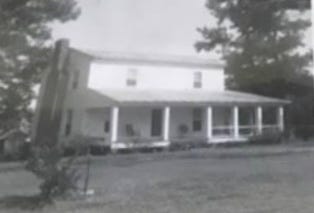
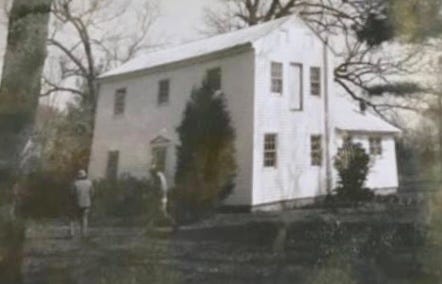
Photo Credit: Carol Gray
In the still darkness of a sweltering summer night in 1837, Hardy P. Sugg lay rigid in his bed, his eyes wide with terror. An unseen force pressed upon his chest, squeezing the very breath from his lungs. He tried to scream, but no sound escaped his lips. His limbs, leaden and unresponsive, refused to obey his desperate commands to move. As the shadows in the corners of the room seemed to creep closer, Hardy's mind raced with a single, chilling thought: he was trapped, helpless, at the mercy of something he couldn't see or understand.
This harrowing experience, which would come to be known as "the crushing," marked the beginning of a tale that would weave its way through generations, leaving an indelible mark on the history and folklore of Greene County. The story of Hardy P. Sugg and the mysterious Witch Bottle is more than just a local legend; it's a chilling testament to the power of the unexplained and the lengths to which people will go to find meaning in the face of terror.
As Hardy lay paralyzed, unable to cry out for help or escape the oppressive weight on his chest, he had no way of knowing that this night would set in motion a chain of events that would span nearly 150 years. His desperate search for answers would lead him down a path of folk magic and superstition, culminating in the creation of a witch bottle that would become the stuff of legend.
Little did Hardy know, as he struggled against the invisible force pinning him to his bed, that the two-story farmhouse he had so recently built at the crossroads of what would one day be Gray's Mill Road and Highway 258 would become the epicenter of a mystery that would captivate and haunt the community for generations to come.
The terror that gripped Hardy that night was only the beginning. In the days and weeks that followed, he found himself plagued by a series of inexplicable phenomena that defied rational explanation. The "crushing" sensation returned night after night, leaving him exhausted and fearful of sleep. But the horrors did not confine themselves to the dark hours.
During his waking hours, Hardy experienced sudden, sharp pains that shot through his limbs without warning. Mysterious bruises appeared on his skin, as if he had been beaten in his sleep. Most disturbing of all were the episodes of lost time, where Hardy would find himself in different locations on his property with no memory of how he had gotten there. These instances left him deeply unsettled, wondering what forces were at play during these blackouts.
The once-robust farmer became a shadow of his former self, plagued by fatigue and an ever-present sense of dread. His daily farm duties, once performed with vigor and pride, became arduous tasks that left him exhausted and fearful of what each new day might bring. Hardy's affliction didn't just affect him physically; it began to take a toll on his mental state as well. He reported vivid, haunting nightmares that blurred the line between sleep and wakefulness, often featuring a witch-like figure that would later be identified in family lore as "Drucilla."
In the medical context of 1837, rural North Carolina had limited access to trained physicians. The germ theory of disease was still decades away, and many illnesses were attributed to imbalances in bodily humors or, in more superstitious communities, to supernatural causes. Those doctors who were available often relied on treatments that we now know to be ineffective or even harmful, such as bloodletting or the use of mercury-based medicines.
Mental health conditions such as sleep paralysis, night terrors, or anxiety disorders were not recognized as distinct medical issues. Instead, they were often lumped together under vague terms like "melancholia" or, in more superstitious circles, attributed to spiritual or supernatural causes. This lack of medical understanding left Hardy and his family grasping for explanations, their fear and confusion growing with each passing day.
As news of Hardy's affliction spread through the tight-knit farming community, whispers began. Some spoke of curses, others of divine punishment, but one name kept surfacing in hushed tones: Drucilla. Known to few but feared by many, Drucilla was a reclusive figure who lived on the outskirts of the county. With her wild, unkempt hair and eyes that seemed to pierce the soul, she had long been the subject of local superstition. Now, in the minds of many, she became inextricably linked to Hardy's mysterious ailment.
Desperate for relief and finding no solace in traditional remedies, Hardy turned to a local witch doctor, a decision that would alter the course of his life and create a legacy that would outlive him by generations. This choice was not unusual for the time and place. In many rural communities, individuals known as witch doctors, root workers, or cunning folk straddled the line between folk medicine and magical practice. These practitioners often combined herbal knowledge with spiritual or magical rituals, offering hope to those who had exhausted other options.
The witch doctor listened gravely to Hardy's tale of nocturnal terrors and daylight horrors. Drawing on a tradition that blended European folk magic, African spiritual practices, and local herbal lore, the practitioner declared that Hardy was under a witch's curse. His prescription was as enigmatic as the affliction itself: two bottles of a specially prepared "magic elixir," each with its own crucial role to play.
The ritual that followed was steeped in the folk magic traditions that had traveled across the Atlantic with early settlers, evolving and intertwining with local beliefs. Hardy was instructed to bury one bottle beneath the hearth of his home, the very heart of the household, while the other was to be cast into a roaring fire. The hearth, traditionally seen as the heart of the home, was believed to be a powerful location for protective magic. Burying a witch bottle under the hearth was a practice with roots in European folk magic, particularly English traditions dating back to the 16th century.
The bottle buried beneath the hearth contained specific items: a lock of curly red hair, a feather, old sharp sewing tack pins, and sand. Each of these objects would have held deep symbolic significance in the magical practices of the time. Currently, the bottle is safely stored in a local bank’s safety deposit box. The contents of the second bottle, the one consumed by flames, remain unknown to this day, taking its secrets into the fire that night.
As the flames consumed the second bottle, Hardy would later recount, he witnessed a vision that would haunt him for the rest of his days: the spectral form of Drucilla, astride a ghostly white horse, writhing amidst the flames before vanishing in a plume of smoke. This dramatic revelation was interpreted as the moment when the witch was exorcised from Hardy's body and trapped within the buried bottle. Whether through the power of suggestion, the placebo effect, or a genuine alleviation of his symptoms, Hardy reported feeling immediate relief following this ritual.
For 139 years, the bottle lay hidden beneath the hearth, its existence fading into family lore, a story passed down through generations but never fully believed. The tale might have remained in obscurity were it not for the events of 1976, when a startling discovery breathed new life into the old legend.
It was a sweltering day in late June when the chimney of the old Sugg homestead, now 140 years old, finally collapsed. Fletcher Gray and his 16-year-old son Joel were clearing the rubble and hauling off bricks in buckets. As they neared the bottom of the mound, Fletcher warned Joel to be on the lookout for the bottle he had heard about all his life, the same bottle that three generations before him had spoken of in hushed tones.
The sharp ring of Joel's shovel striking glass made his pulse race in eager anticipation. Instantly, he fell to his knees and began clearing the earthen mortar from around a dark green bottle, embedded upside down in the hearth of the fireplace.
"Dad, come here, Quick! I found it! I found it!" Joel cried out. There was a crash as two buckets fell to the ground, and seconds later, Fletcher arrived, panting heavily.
"I'll be damned if you haven't!" he gasped. Less than a minute later, the ancient-looking bottle was resting precariously in his calloused, nervously shaking hands.
The discovery of the witch bottle set in motion a series of events that would reignite the legend and spark new mysteries. That very evening, as Fletcher and Joel made their way to share their discovery with family members, strange occurrences began to unfold.
Joel's step-grandmother suffered an unexpected heart attack, requiring immediate hospitalization. As Joel's mother rushed her to the hospital, she stopped at Jack-In-The-Box for dinner. Joel's little brother, not wearing shoes, stepped on a piece of glass when exiting the car, slashing his foot severely. The injury was serious enough to require medical attention, adding to the family's distress.
Most unsettling were the reports from Joel's great-aunt Iris and other family members. Iris, the sister of Joel's real grandmother Lotchen Hill, had been raised in the "Old House" and was the last survivor of her generation. Around midnight, Iris and other family members (who were generally considered to be of sound mind) awoke to see "fireballs" dancing around the living room walls. There was no electrical storm, no car lights, no reasonable explanation for the phenomenon. This pyrotechnical display soon ended, and they went back to sleep, but the incident left them deeply unsettled.
That same evening, Fletcher and Joel took the bottle to Fletcher's mother's home near Trenton, North Carolina, about thirty miles away. The next morning, Joel's great grandfather, Tobe Gray, left for church as he did nearly every Sunday of his life. On the return trip, Tobe was involved in a serious auto accident. His car was destroyed, and he received several bad cuts and bruises. When he described the wreck, he said the other car had "come out of practically nowhere."
When Fletcher called Joel's mother long-distance in Hampton to relay the news, she immediately sensed something was amiss. Before he could explain, she asked, "Fletcher, something bad has happened in North Carolina, and something terrible has happened here. Does it have anything to do with the old house?"
The discovery of the witch bottle and the subsequent string of misfortunes reignited interest in the legend of Hardy Sugg and the witch Drucilla. Many in the community believed that by unearthing the bottle, they had inadvertently released the trapped spirit, allowing it to once again wreak havoc.
The story of the witch bottle might have remained a curious family anecdote, a local legend to be shared over coffee or whispered about on stormy nights. But fate, it seemed, had other plans. On March 28, 1984, nature unleashed its fury upon Greene County in the form of a devastating tornado outbreak. The twister that tore through the area where the Sugg homestead stood was particularly violent, its roar described by survivors as a freight train barreling through their homes.
In mere moments, the house that had stood for nearly 150 years, weathering countless storms and holding its secrets close, was reduced to scattered debris. The tornado's path of destruction claimed not only the historic structure but also seven lives along that single road, a tragedy that would scar the community for years to come.
Today, only a simple fire hydrant marks the intersection where the Sugg homestead once stood. Yet for those who know the tale, this unremarkable spot remains heavy with history. The story of the witch bottle has transcended its origins as family legend to become a window into the beliefs, fears, and resilience of rural America. It speaks to humanity's eternal quest to understand the inexplicable and control the uncontrollable.
There, at the crossroads of past and present, of reality and legend, the witch bottle continues to cast its spell—a reminder that some mysteries are meant to endure, some stories are meant to be retold, and some bonds—whether of family, community, or shared belief—can withstand even the fiercest storms.
Highlights from the Outside: Articles You May Have Missed
In this section, we share noteworthy articles from external publications that provide valuable insights and updates relevant to our community. These pieces are worth a read if you haven't seen them yet.
In North Carolina, Public Education Is at the Heart of Governor’s Race. “Election day has got everybody a little nervous in the education world in North Carolina,” said Patrick Greene, president of the statewide school leader association and principal of Greene Central High School in Snow Hill, a town just over an hour’s drive southeast of Raleigh.
The Community Calendar
Tuesday, October 29, 2024: Absentee Ballot Request Deadline, by 5:00 PM.
Thursday. October 31, 2024: New Life World Outreach Center's annual "Fall Harvest Carnival," 5:00 PM at 106 Hull Road, Snow Hill, NC.
Thursday, October 31, 2023: "Octoberfest" at Victory and Dominion World Outreach Center, 7:00 - 9:00 PM.
Thursday. October 31, 2024: Snow Hill Police Department's 3rd annual "Trunk or Treat," 6:00 PM at the Greene County Wellness Center.
Thursday, October 31, 2024: Halloween
Friday-Saturday, November 1-2, 2024: Dinner Theater Show, First Baptist Church - Snow Hill, 6:00 - 8:00 PM. Pork Chop Meal, Live Music Performances, Skits, & Whole Lot of Fun!!! $25 per ticket. Contact: 252-531-5523 for tickets. 509 Kingold Blvd, Snow Hill, NC 28580. All profits support local missions.
Saturday, November 2, 2024: Farmer and the Dail (FATD) Fall Market, 8 AM - 2 PM.
Saturday, November 2, 2024: In-Person Voting ends at 3:00 PM.
Sunday, November 3, 2024: Daylight savings time ends at 2:00 AM. Turn your clock back 1 hour before bedtime and replace the batteries in your smoke alarm.



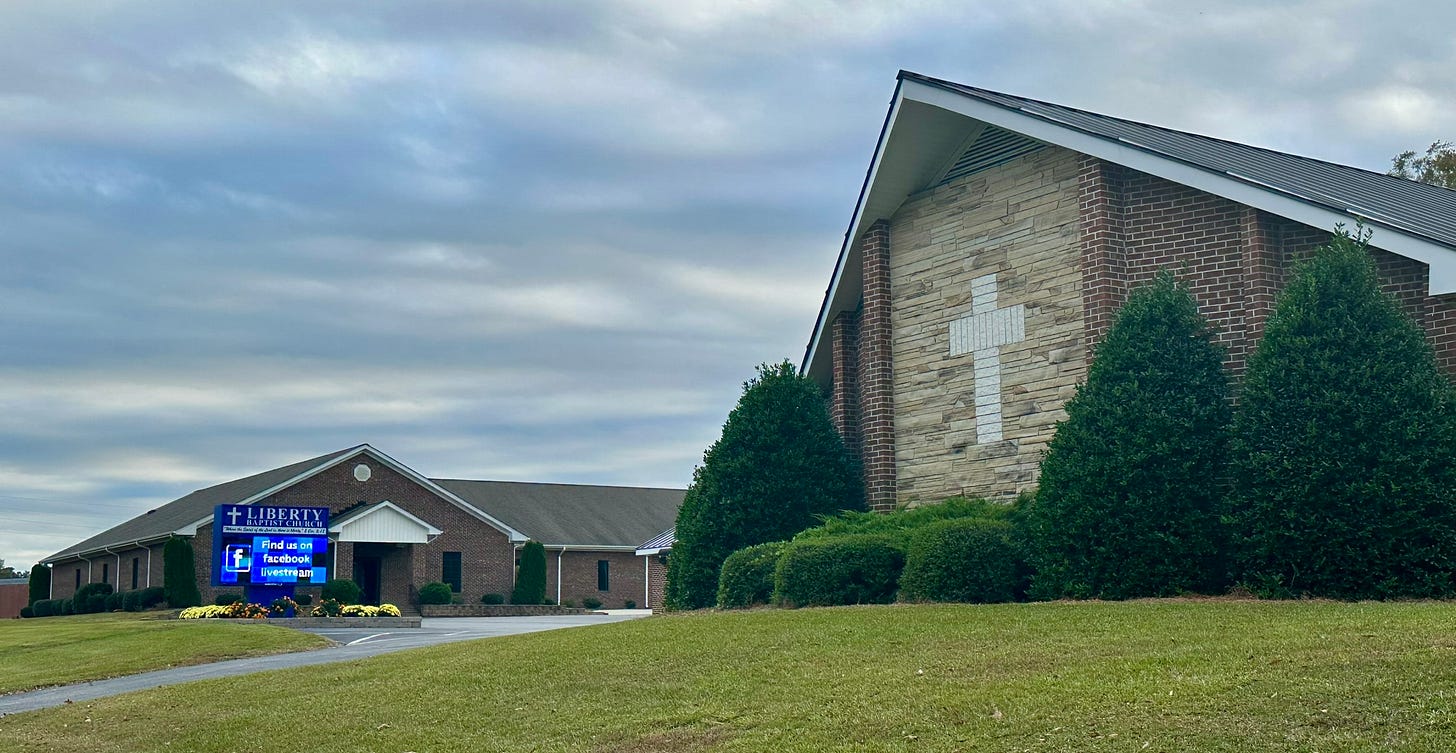
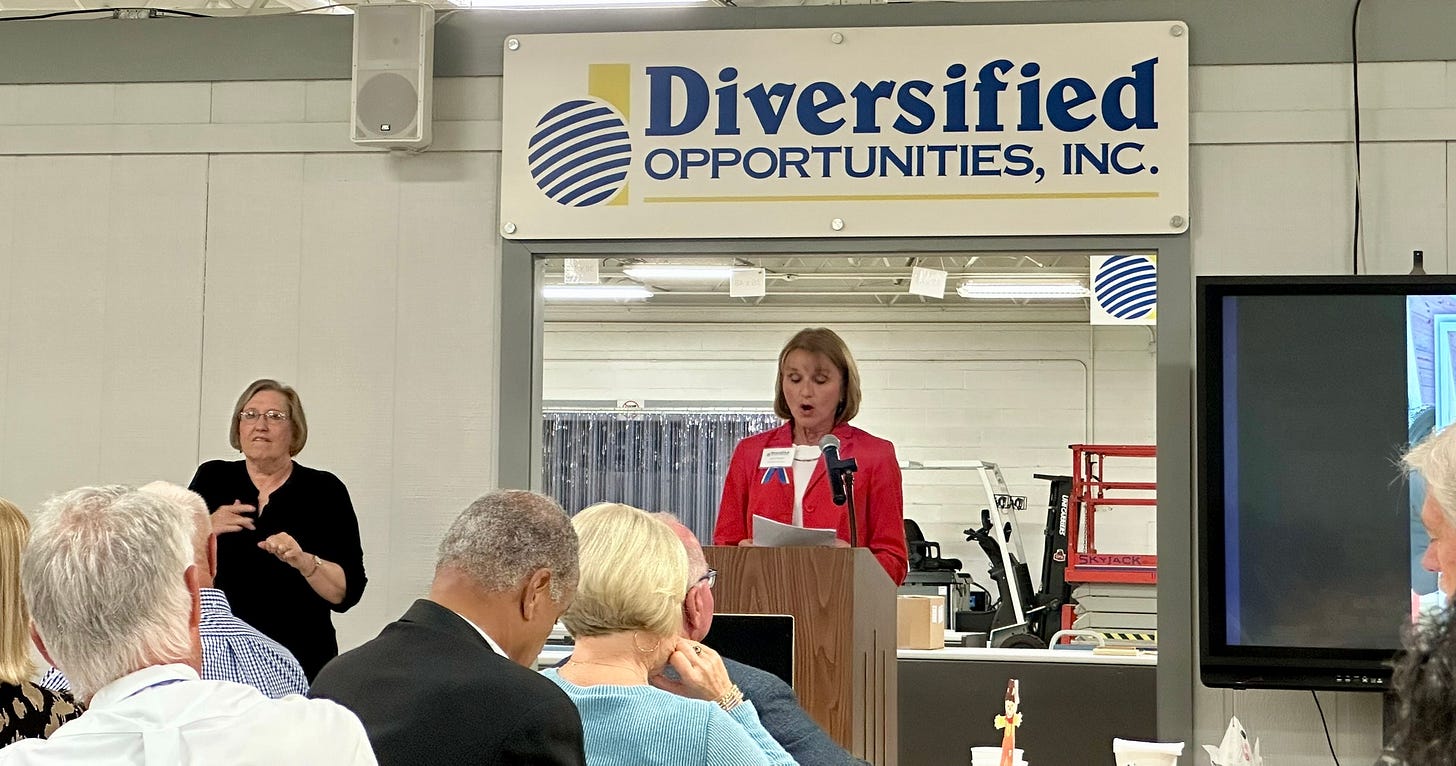
This is amazing! I have been researching this story for years! I'd love to compare notes sometime.